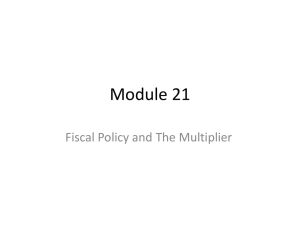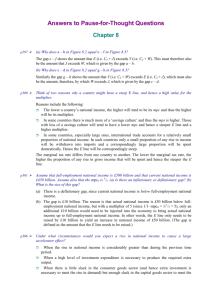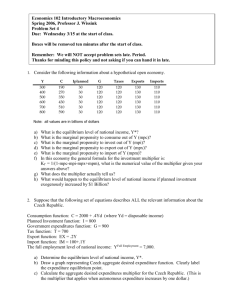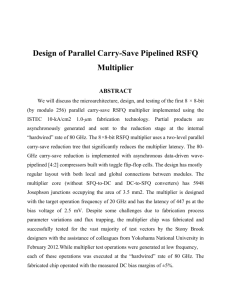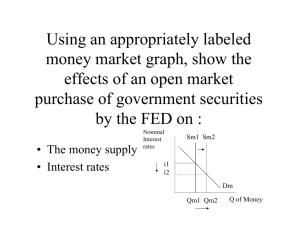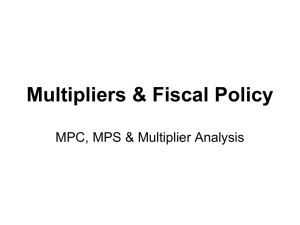Equilibrium GDP and the Multiplier Effect
advertisement
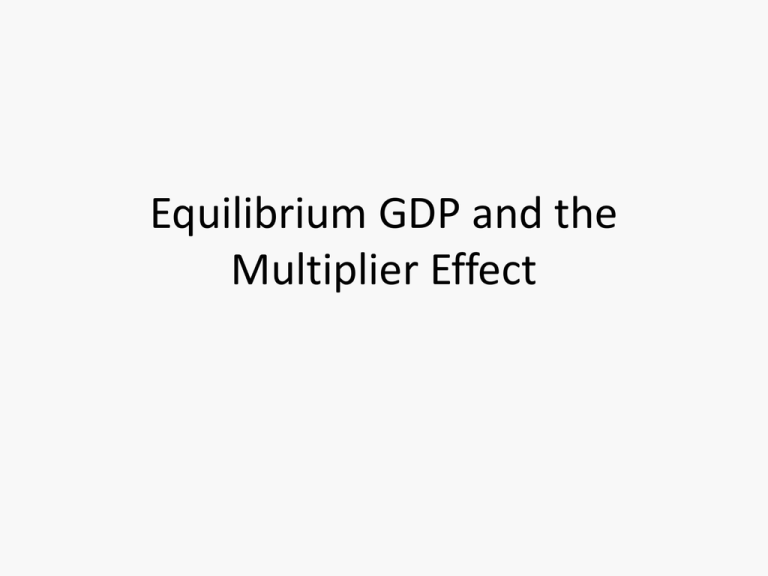
Equilibrium GDP and the Multiplier Effect Aggregate Expenditures • The total amount spent on final goods and services. • AE consists of (C) consumption + (Ig) Gross Investment. AE = C + Ig Equilibrium GDP • The level at which the total quantity of goods produced equals the total quantity purchased. • There is no surplus or shortage of goods. • This means no unplanned changes in inventory. • Below equilibrium GDP, there would be upward pressure on employment, output, and income. Above equilibrium, the opposite. Graphical Analysis Savings Equals Planned Investment • Savings (S) and Planned/Gross Investment (Ig) are equal at equilibrium GDP. • Savings is a leakage, or a withdrawl of spending. but, it can also be thought of as an injection. • As an injection, savings essentially results in Gross Investment, which increases Income GDP. The Multiplier Effect • The multiplier effect shows that an initial change in spending can cause a larger change in DI and output or GDP. • The multiplier determines how much larger that change will be. • It measures the effect that any change in expenditure (G, C, Ig, or Xn) will have on GDP. The Multiplier Effect • Multiplier = Delta GDP / Delta Spending Or… Change in GDP = Multiplier x Delta Spending • When Person A spends his money, it becomes person B's income. Then person B will go spend their income, which then becomes person C's money, etc. • The cycle repeats, but because of the tendency to save, the amount spent in each cycle is less and less. The Multiplier and Marginal Propensities • The higher the MPC (thus, lower MPS), the larger the multiplier because the multiplier is equal to (1 / MPS) • If the multiplier is equal to the reciprocal of the marginal propensity to save, the greater the marginal propensity to save, the smaller the multiplier, and vice versa. • High MPC = High Multiplier. Significance of the Multiplier • Small changes in consumption and savings can trigger large changed in GDP. • For countries that have a high MPC, this can create large boom and bust business cycles. • There is also a complex multiplier that includes other leakages besides savings. These include taxes and imports. Test Preparation • Complete Questions 9, 10, and 17 on pages 223 and 224.


